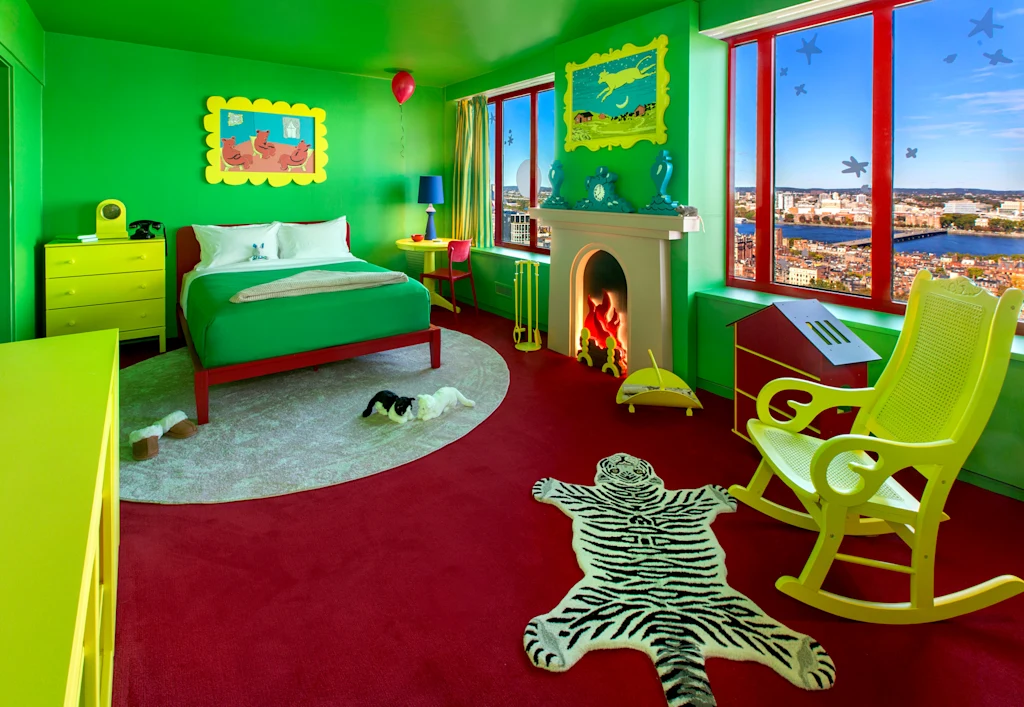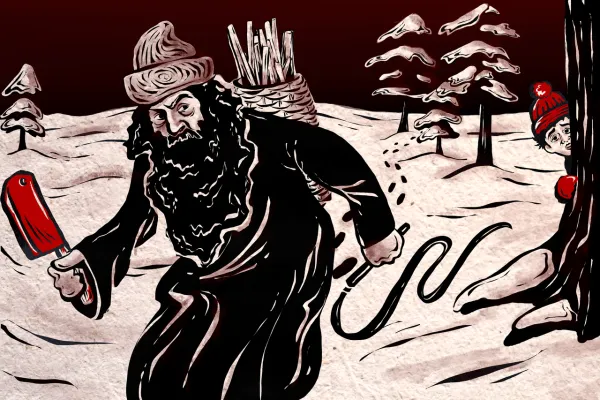You can rent a hotel room that looks like Goodnight Moon

If you were one of the millions of children who grew up reading Goodnight Moon before bed, chances are its iconic green bedroom is permanently seared into your memory. Now, for the next four months, you have the opportunity to sleep in the Goodnight Moon room IRL. The Goodnight Moon room has been faithfully re-created—down to the red balloon, bowl of mush, and cow jumping over the moon—for a new immersive suite at the Sheraton Boston Hotel. The room can accommodate up to two adults and two children, and a booking in the suite comes with perks like four tickets to the View Boston observation deck, a $150 daily food and beverage credit, complimentary moon and star cookies, and even the supplies to make your own bowl of mush. It’s available to book now through February 28, 2026, starting at $399 per night. (via Fast Company)
Study finds that people behave better if there's someone nearby dressed as Batman

After making a guy dressed as Batman stand around in a subway car, a team of researchers found that the behavior of people around him suddenly improved the moment he showed up. No longer was everyone completely self-involved; with the presence of a superhero, commuters started helping each other more than they would’ve without him around. The findings of the unorthodox study, published in the journal npj Mental Health Research, demonstrate the power of introducing something offbeat into social situations to jolt people out of the mental autopilot they slip into to navigate the drudgery of everyday life. In a series of experiments, the researchers had a woman who visibly appeared pregnant enter a busy train, and observed how often people offered to give up their seats. They then repeated this scenario with a crucial change: when the pregnant woman entered the train from one door, a man dressed as Batman entered from another. (via Futurism)
Famous mathematician Rene Descartes may have been poisoned by a priest

In 1649, Queen Christina of Sweden invited Descartes to Sweden, and he accepted after she asked him to organize a scientific academy. She sent a ship that transported him and 2,000 of his books to Sweden. His philosophy lessons with Queen Christina started in December 1649, but by mid-January 1650, he had only seen the queen four or five times. In February, 1650, Descartes became ill and died on February 11, 1650. His death was attributed to pneumonia with the possibility of an associated pleurisy. In the 1980s, letters surfaced, including one from Dr. Jan van Wullen, a Dutch physician in Stockholm, who wrote that Descartes had increased skin pigmentation and blood in the urine. These are not typical findings in patients with pneumonia. Could there be another explanation for the savant’s death? After the van Wullen letter was discovered, it was suggested that Descartes was poisoned, perhaps by a Protestant clergyman, to prevent Descartes’ convincing the queen to convert to Catholicism. (via Hekint.org)
Hi everyone! Mathew Ingram here. I am able to continue writing this newsletter in part because of your financial help and support, which you can do either through my Patreon or by upgrading your subscription to a monthly contribution. I enjoy gathering all of these links and sharing them with you, but it does take time, and your support makes it possible for me to do that. I also write a weekly newsletter of technology analysis called The Torment Nexus.
Moss survived for nine months on the outside of the International Space Station

Astronauts affixed moss spores to the outside of the International Space Station for nine months, and more than 80 percent of them survived. This suggests that moss can tough out the vacuum of space for extended periods, according to a new paper in iScience.Scientists had previously subjected mosses to lab conditions mimicking those on Mars, but the authors say their findings offer direct evidence of how the low-lying plants fare when exposed to an unforgiving extraterrestrial environment.“This provides striking evidence that the life that has evolved on Earth possesses, at the cellular level, intrinsic mechanisms to endure the conditions of space,” said paper author Tomomichi Fujita, a plant evolutionary and developmental biologist at Hokkaido University. (via Nautilus)
Two young boys found thousands of gold coins in Baltimore and then things got complicated

On August 31, 1934, 14-year-old Theodore Jones and his friend, 15-year-old Henry Grob, went to the basement of a three-story house in Baltimore, which they planned to turn into the headquarters of a boys’ club which they planned to call the "Rinky-Dinky-Doos." In a corner of the basement, the boys began excavating a hole in which to conceal any dues they might collect, when they spotted something shiny. It was a $20 gold piece. The boys kept digging, and found an old copper pot containing thousands of gold coins of various denominations. They walked to the nearest police station and gave the sergeant $7,000 in gold coins. Naturally, the press soon got wind of this seeming rags-to-riches story. Unfortunately, it soon appeared that taking possession of this fortune would not be as easy as they had thought. Unpleasant legal questions soon emerged about who, exactly, was the rightful owner of the gold. (via StrangeCo)
Inside a hunter's "one-way visibility" tent

Acknowledgements: I find a lot of these links myself, but I also get some from other newsletters that I rely on as "serendipity engines," such as The Morning News from Rosecrans Baldwin and Andrew Womack, Jodi Ettenberg's Curious About Everything, Dan Lewis's Now I Know, Robert Cottrell and Caroline Crampton's The Browser, Clive Thompson's Linkfest, Noah Brier and Colin Nagy's Why Is This Interesting, Maria Popova's The Marginalian, Sheehan Quirke AKA The Cultural Tutor, the Smithsonian magazine, and JSTOR Daily. If you come across something interesting that you think should be included here, please feel free to email me at mathew @ mathewingram dot com



